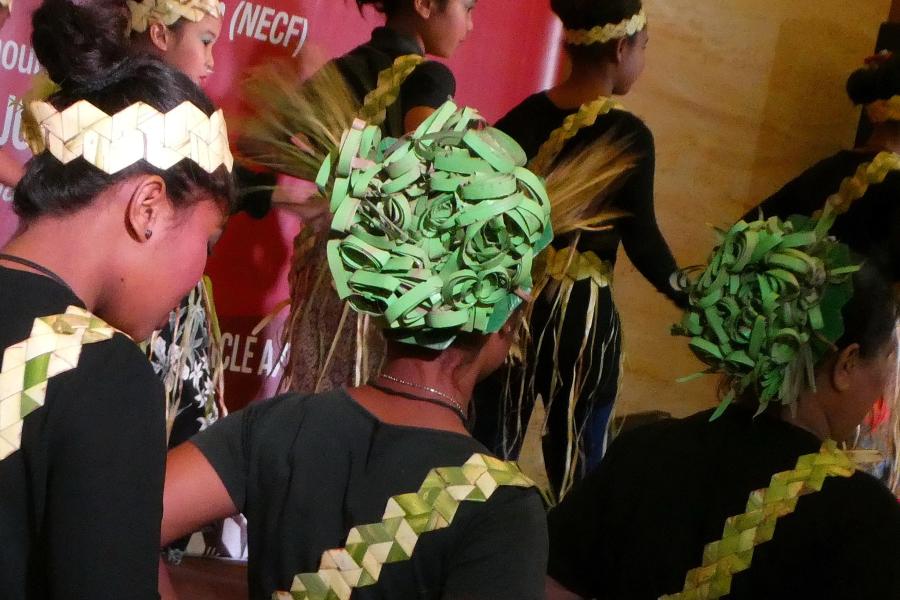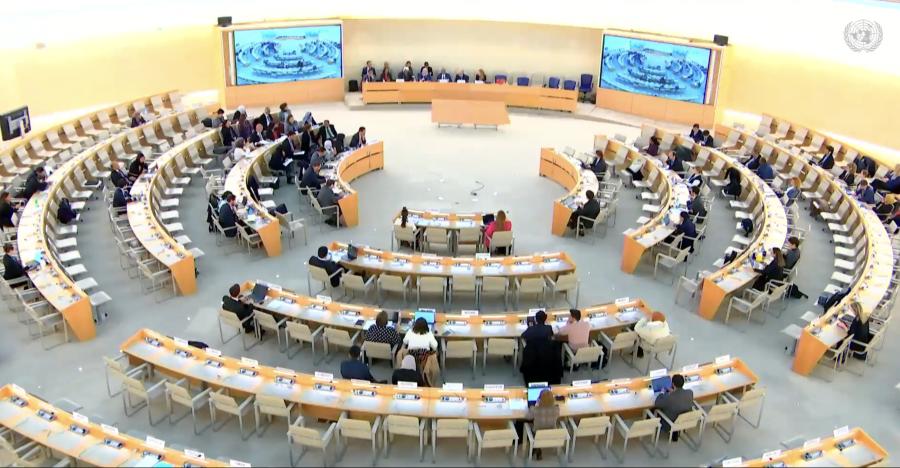Two More Dams May Displace Another 17,000 Natives
Within the next 10 years, Sarawak may have three huge hydroelectric dams - but not without displacing 20,000 people and destroying tens of thousands of hectares of tropical rain forest. Already, more than 3,000 Iban, the longhouse dwellers of Sarawak's vast, trackless jungles, have been forced to move from their homes to make way for the recently opened $526 million Batang Ai Dam on the Batang Ai River at Wong Irup. Resettled in 10 new longhouses(1) in 1982 at Lubuk Antu, away from the 21,000-acre lake created by the rockfill dam, the Iban have yet to receive part of their promised compensation money. Most of their promised agricultural land has yet to be cleared as well.
Now, even though the viability and social and environmental impact of two hydroelectric projects on the Upper Rajan River remain questionable, plans for resettling more than 17,000 people and building the proposed Bakun and Pelagus dams are underway. The combined cost of the two dams, excluding costs for resettlement programs, access roads, etc., could reach more than $12 billion.
Government officials contend that Malaysia has a substantial hydroelectric potential that is being under utilized. Harnessing such a large potential is one of the basic objectives of the national energy policy; a major domestic renewable source of cheap energy could be made available and dependence on thermal power plants and environmental pollution caused by burning fossil fuels reduced. Since Sarawak's hydroelectric potential far exceeds local power needs, steps toward utilization include plans to supply Peninsular Malaysia via the longest high-voltage, deep sea transmission cables ever built. Technically difficult to install, the lengthy cables will cost an estimated $5 billion.
The two proposed dams, nevertheless, have gained popularity. Energy-intensive industries, particularly the aluminum smelting industry, which requires huge amounts of electricity to operate - and causes dangerous air pollution - are anxious to see the dams completed, despite the dams' financial and technical impediments and the problems that have arisen with the natives displaced by the Batang Ai Dam.
Dam Forces Iban to Leave Their Homes
Almost every aspect of the Iban's traditional life in the jungle near Lubok Antu has been shattered by what the state government asserts is necessary progress and development. Forced to leave their homes to make room for the Batang Ai Dam, the Iban also had to ritually exhume and move their ancestral graves in order to prevent them from being submerged by the lake created by the dam. In addition, the Iban have had to pay for their new homes at Lubok Antu, which were promised to be given free as part of the compensation. While given a choice of different types of store-bought replacement models of their traditional longhouses, the displaced natives were asked to repay the Housing Development Corporation $120 per month as installment for 20 years for each house. In addition, each household was given only 14 acres of land as farmland with the "consoling" proposition that the projected income of their farmland would be $570 per month - 10 years hence.
Government officials say the new longhouses have piped water and electricity and that people will soon benefit from services such as a clinic and school as well. Each family, however, is still awaiting $50,000 to $100,000 promised compensation for crops lost on old land. Meanwhile, government agricultural officials are trying to get the Iban to stop practicing slash-and-burn agriculture and cultivate, on fixed acreage, cash crops such as oil palm and cocoa (a palm oil extraction plant is already in operation nearby). Unaccustomed to this purely monetary economy that has replaced their system of barter, many of the displaced Iban feel even more disoriented and have refused to comply. Spurning resettlement, some have fled into the hills, while others reportedly have committed minor acts of sabotage such as stealing ignition keys from construction equipment.
Initial Studies Indicated Financial Savings
Despite what is happening to the Iban and the controversy and ongoing studies still surrounding the impact of the proposed Bakun and Pelagus dams on the indigenous people and environment of Sarawak, engineers are already in the final stages of designing the $8.14 billion Bakun Dam project and construction is expected to begin sometime this year as soon as the federal government gives the go-ahead. Close to 200 workers, including employees from the Malaysian Soil Investigation (MSI) firm and Sarawak Electricity Supply Corporation (SESCO), have already begun working at the Bakun Dam site.
Feasibility and master plan studies of the Bakun Dam conducted by SESCO, SAMA Consortium,(2) Malaysia's Economic Planning Unit (EPU) and the National Electricity Board (NEB) of Peninsular Malaysia have yet to be completed, but some initial findings indicate that the Bakun Dam alone could reduce almost one-quarter of Malaysia's current consumption of domestically produced crude oil and save nearly $2 billion annually. This generation of electricity and financial savings would allow the country to conserve and export oil and gas as well.
Government Claims Resettlement Program an Economic Objective
About 4,131 individuals, including Kajang, Kayan, Kenyah, Badang Kenyah, Penan and Ukit peoples in 16 different communities upstream of the 160-meter-long Bakun Dam, however, will be directly affected by the proposed project. While most of these people practice slash-and-burn agriculture, hunting and fishing provide them with important sources of protein. Rattan and Kayu Guru (scented wood) are also important sources of cash income.
To date, studies have yet to be conducted to assess the effect of the dam on the indigenous inhabitants' fishing and hunting grounds. Needless to say, the cultural and religious significance of their lands has yet to be appropriately considered as well.
To persuade the natives to willingly lease these lands(3) and their homes, the government has promised that the dams will bring them electricity as well as allow the development of irrigated farming, lead to fishery industries in the artificial lakes, promote tourism and create new job opportunities. Given the experiences of natives forced to resettle by the Batang Ai Dam, many people believe the possible adverse effects of the Bakun and Pelagus Dams must not be ignored, and that the socially deleterious impact of resettlement, which would involve more than twice as many people, could be even more extensive.
Some state government officials, however, regard the resettlement programs as a fulfillment of the national economy policy's objectives, that is, to restructure Sarawak society. They argue that scattered small settlements constrain development and raise the cost of public amenities in rural areas. In addition, they claim benefits brought about by the hydroelectric projects outweigh the negative impacts induced by resettlement.
Malaysia's Power Needs Disputed
With peak loads estimated to reach 7,000 to 8,000 megawatts in the 1990s and more than 15,000 megawatts by the year 2010 in Peninsular Malaysia, officials hope to meet the mainland's power needs by transmitting excess hydroelectricity produced from the two dams via submarine cables under the South China Sea. Six hundred km long, the proposed high-voltage direct current (HVDC) project, reviewed by SESCO, would be the longest in the world. Currently, the longest HVDC submarine cable, constructed between Norway and Denmark, spans 120 km. While the cost of hydroelectric energy is estimated to be cheaper than any of the thermal alternatives (natural gas, coal, residual oil and associated gas) for Sarawak, the cost of delivering that energy to Peninsular Malaysia will be higher because of relatively high transmission cost. SESCO managers claim that with rising fuel prices, the transmission will become increasingly more attractive in the 1990s. However, fuel prices currently are falling.
Some government ministers say, however, that Malaysia has sufficient electricity-generating capacity to meet current and future energy demands. The government's announcement, over a year ago, that palm effluents should be used to produce diesel was a significant move toward providing a good portion of the country's energy needs. In addition, SESCO has identified 150 mini-hydroelectric sites such as those proposed for the Bakun and Pelagus dams. These smaller sites would enable less expensive, technically simpler projects that would also have less impact on the indigenous population and the environment. The Bakun and Pelagus dams, in contrast, will completely change the character of the entire Rajang catchment; if the area, in addition, is not well-managed to control silt and sedimentation, excessive erosion and siltation will render the dams useless.
Energy-intensive Industries Pose Additional Threats
Nevertheless, some government ministers would like to see energy-intensive industries set up in Bintulu, a coastal town in Sarawak, using electricity produced by the two proposed dams. In 1977, the Malaysian government and Reynolds, an aluminum smelting company, tentatively agreed to establish an aluminum smelting plant in Bintulu. The plant, whose electricity needs are to be obtained from the Bakun Dam, will cost an estimated $1 billion. The hazards presented by aluminum smelting plants, however, can be catastrophic. In West Germany, when a Reynolds aluminum smelting plant caused millions of dollars of environmental damage with its fluoride emissions in the 1970s, a court ordered it to reduce its production to two-thirds of its capacity.
Until recently, the capital-intensive aluminum smelting industry has been located in developed countries. But as environmental restrictions become more stringent and cumbersome to overcome, more and more companies are looking to operate in less regulated countries. Given the environmental record of such companies, their interest in the Bakun and Pelagus dams and hydroelectric development in Sarawak should be questioned.
If the Batang Ai Dam is any indication of the "success" of hydroelectric development in Sarawak, it's evident lessons have yet to be learned. Unless coherent and common-sense planning and management of people and natural resources are undertaken, not only will people not benefit, but they clearly will suffer tragically.
Footnotes
(1) The population of a longhouse is calculated in "doors." One door usually includes a family of about eight people. Long-established longhouses can have 20 or more doors.
(2) SAMA Consortium is a group of German and Swiss engineering consulting companies working under a technical aid program sponsored by the German Agency for Technical Corporation (GTZ), acting on behalf of West Germany.
(3) Native customary rights of acquisition and possession, laid down in the Sarawak Land Code in 1958, apply to all these areas.
Article copyright Cultural Survival, Inc.


